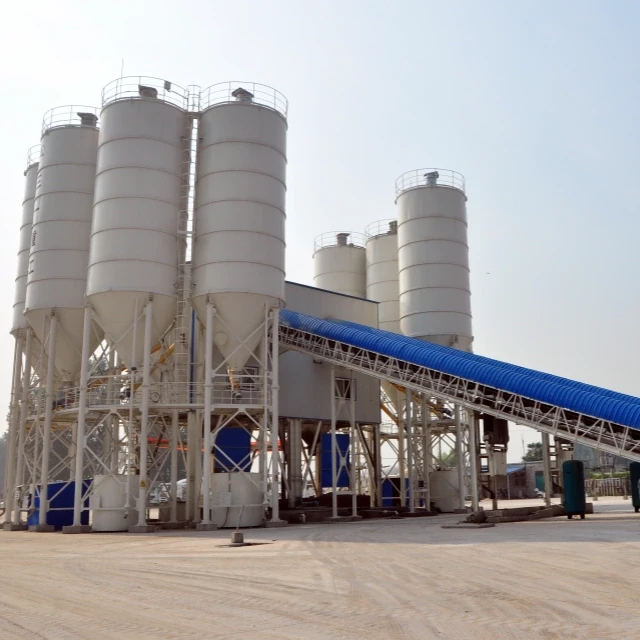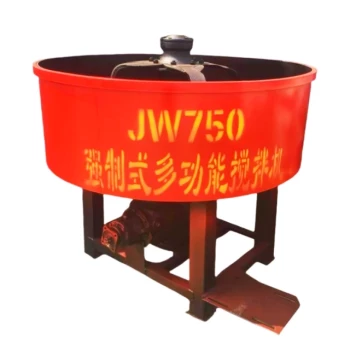Introduction
Winter operations in concrete mixing stations face a critical challenge: frozen water supply systems that halt production and compromise concrete quality. This guide delivers proven strategies to maintain operational reliability below freezing temperatures, combining insulation techniques, active heating solutions, and antifreeze chemistry—all validated by industry best practices.
Winter Risks to Water Supply Systems in Concrete Mixing Stations
How Freezing Disrupts Concrete Production Cycles
Frozen pipelines create a domino effect: delayed batching, inconsistent water-to-cement ratios, and structural weaknesses in cured concrete. Ever wondered why winter concrete often fails strength tests? Ice blockages force operators to use improvised thawing methods, wasting 2–3 hours per incident (based on field reports from northern U.S. mixing stations).
Critical Temperature Thresholds for Water Stability
- 32°F (0°C): Surface ice forms in open tanks
- 20°F (-6.7°C): Pipe interiors begin freezing without insulation
- -10°F (-23.3°C): Standard insulation fails; active heating becomes mandatory
Pro Tip: Install temperature sensors at pipe elbows—the most vulnerable points for ice nucleation.
Proactive Freeze Prevention Strategies
Insulation Materials and Pipeline Layout Optimization
Layer like an onion:
- Inner Layer: Closed-cell foam sleeves (R-value ≥ 3.5/inch)
- Middle Layer: Reflective foil barriers to deflect wind chill
- Outer Layer: UV-resistant PVC jacketing
Layout Hacks:
- Bury pipes below frost line (4–6 ft in Zone 5 climates)
- Slope pipes 1/4" per foot toward drainage valves
Active Heating Systems: Electric vs. Steam-Based Solutions
| Feature | Electric Heat Trace | Steam Tracing |
|---|---|---|
| Installation | Faster | Requires boiler |
| Operating Cost | $0.15–$0.30/kWh | $1.20–$2.00/therm |
| Best For | Intermittent use | 24/7 operations |
Case Example: A Minnesota station reduced thawing downtime by 78% after switching to self-regulating electric cables with IoT temperature alerts.
Antifreeze Additives: Compatibility with Concrete Quality
Safe Options:
- Calcium chloride (max 2% by water weight)
- Propylene glycol (non-corrosive but requires mix adjustments)
Lab-Verified Impact: 5% antifreeze concentration can reduce 28-day compressive strength by up to 12%. Always test trial batches before full-scale use.
Case Studies and Industry Best Practices
Successful Freeze Prevention in Sub-Zero Environments
Alaska Highway Project (2022):
- Challenge: -40°F (-40°C) with 60 mph winds
- Solution:
- Underground pipe network with heated valve boxes
- Glycol loop for auxiliary equipment
- Result: Zero freezing incidents during 14-week winter pour
Cost-Benefit Analysis of Insulation vs. Heating Investments
| Strategy | Upfront Cost | 5-Year Savings |
|---|---|---|
| Premium Insulation | $8,000 | $12,000 (labor savings) |
| Electric Heating | $15,000 | $18,000 (production continuity) |
ROI Tip: Combine insulation with spot heating for 30% faster payback period.
Conclusion: Winter-Proof Your Water System Today
- Monitor Religiously: Automated alerts beat reactive thawing
- Insulate Strategically: Focus on joints and valves
- Heat Smartly: Match system to your operating schedule
For stations using Garlway winches in material handling, ensure winterization extends to hydraulic fluid viscosity checks—another cold-weather failure point.
Final Thought: What’s your station’s weak link—pipe insulation, heating capacity, or additive management? Address that first before deep winter hits.
Related Products
- HZS75 Concrete Batching Plant Cement Mixer Price Concrete Mixer Bunnings Mixing Plant
- HZS180 Ready Mix Concrete Plant for Foundations with Sand and Cement
- Portable Concrete Mixer Machine Equipment for Mixing Concrete
- JW1000 Mobile Cement Mixer Concrete Mixer Truck and Batching Plant
- HZS120 Ready Mix Concrete Batching Plant Commercial Mud Cement Mixer
Related Articles
- How to Prevent Cold-Weather Lubrication Failures in Concrete Mixing Stations
- Optimizing Infrastructure Efficiency: How to Choose Between Concrete and Stabilized Soil Mixing Plants
- How to Operate Concrete Mixing Stations in Winter: Protecting Equipment and Ensuring Quality
- How Commercial Concrete Mixing Plants Cut Costs and Boost Project Flexibility
- How to Protect Concrete Mixing Stations From Extreme Weather Damage














